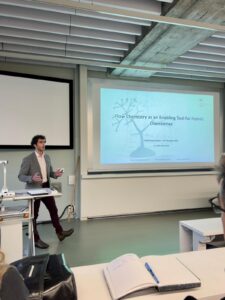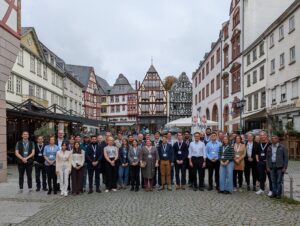
Amines, crucial components in various industries, play a pivotal role in the synthesis of pharmaceuticals, agrochemicals, and specialty chemicals. Recognizing the environmental impact of conventional methods for their preparation, our study centers on the utilization of abundantly available natural molecules, specifically amino acids, as precursors for short chain amine synthesis. This paper focuses on the biocatalyst, L-valine decarboxylase from Streptomyces viridifaciens (VlmD), delving into the substrate scope, catalytic activity, and cost-effective scalability of an enzymatic process for amine synthesis. Additionally, we investigate the feasibility of immobilizing VlmD, aiming to pave the way for its effective use in industrial applications. Our study exploits the SpinChem system and provides a comprehensive understanding of the potential and limitations of this biocatalyst. Notably, our yields for key amines (8.42 g ⋅ d−1 for isobutylamine, 5.23 g ⋅ d−1 for isoamylamine, 5.16 g ⋅ d−1 for (S)-2-methylbutylamine, 3.78 g ⋅ d−1 for 3-(methylthio)propylamine, and 10.52 g ⋅ d−1 for (R)-1-amino-2-propanol) demonstrate the process efficiency and potential for industrial scalability.
Well done to Stefy and Bea!
Full text here




